| Introduction....Etymology of "Dragon" The word "dragon," according to the Oxford English Dictionary (1966), is derived from the Old French, which in turn was derived from the Latin dracon (serpent), which in turn was derived from the Greek Spakov (serpent), from the Greek aorist verb, Spakelv (to see clearly). It is related to many other ancient words related to sight, such as Sanskrit darc (see), Avestic darstis (sight), Old Irish derc (eye), Old English torht, Old Saxon torht and Old High German zoraht, all meaning clear, or bright. The roots of the word can be traced, then, back to most early Indo - European tongues. This may indicate that it is possible the immediate ancestor of the word was a part of the original hypothetical Indo - European tongue which may have been a part of the vocabulary of Japheth's descendants, soon after the Flood and the dispersion from Babel. The Oxford English Dictionary points out that Spakelv is derived from the Greek stem Spak meaning strong. The connection with dragons is obvious. According to the OED, the word was first used in English about 1220 A.D. It was used in English versions of the Bible from 1340 on. [The Footprints of Dragons. Lourella Rouster 1997
Historical Support for the Coexistence of Dinosaurs and Humans [Part I]
An in - depth analysis of the historical evidence that demonstrates man and dinosaurs lived together on the Earth in the not - too - distant past.] No animal, extinct or living, captures the attention of people more than dinosaurs. For decades, they have mesmerized children and entertained adults. Dinosaurs are pictured on television, in books, classrooms, movies, magazines, and on all sorts of paraphernalia. Advertisers use them to sell everything from oatmeal to hamburgers and board games to piggy banks. This animal is so popular with children that it often has its own section in bookstores. Unfortunately, dinosaurs also play a major role in teaching evolutionary theory. We at Apologetics Press feel compelled to write about these extinct reptiles occasionally because they are the poster children for the theory of evolution. What the gecko is to Geico®, dinosaurs are to evolution. Consider an example of their “poster child” status. In the widely used, 100 - page middle school science textbook titled Evolution - Change Over Time (published by Prentice Hall), attempts are made to establish evolution as a fact by using a variety of alleged proofs. One piece of “evidence,” however, that appears on nearly one out of every three pages, centers on dinosaurs. The first two chapters in this three - chapter textbook begin with pictures and text about dinosaurs. In several sections of the book (in which the main thrust is not dinosaurs), students are asked to participate in reading or writing activities that focus on dinosaurs. Truly, the authors and editors of this “science” textbook (which recently was used throughout the United States) have attempted to indoctrinate young minds with the “truths” of evolution by using dinosaurs more than anything else. Indeed, these animals are so entwined with evolutionary thinking that in his anti - creationist book titled Abusing Science: The Case Against Creationism, evolutionist Philip Kitcher admitted that solid evidence for the co - existence of dinosaurs and humans would “shake the foundations of evolutionary theory, because, of course, the dinosaurs are supposed to have been long extinct by the time the hominids arrived on the scene” (1982, p. 121, emp. added). No animal, extinct or living, captures the attention of people more than dinosaurs. For decades, they have mesmerized children and entertained adults. Dinosaurs are pictured on television, in books, classrooms, movies, magazines, and on all sorts of paraphernalia. Advertisers use them to sell everything from oatmeal to hamburgers and board games to piggy banks. This animal is so popular with children that it often has its own section in bookstores. Unfortunately, dinosaurs also play a major role in teaching evolutionary theory. We at Apologetics Press feel compelled to write about these extinct reptiles occasionally because they are the poster children for the theory of evolution. What the gecko is to Geico®, dinosaurs are to evolution. Consider an example of their “poster child” status. In the widely used, 100 - page middle school science textbook titled Evolution - Change Over Time (published by Prentice Hall), attempts are made to establish evolution as a fact by using a variety of alleged proofs. One piece of “evidence,” however, that appears on nearly one out of every three pages, centers on dinosaurs. The first two chapters in this three - chapter textbook begin with pictures and text about dinosaurs. In several sections of the book (in which the main thrust is not dinosaurs), students are asked to participate in reading or writing activities that focus on dinosaurs. Truly, the authors and editors of this “science” textbook (which recently was used throughout the United States) have attempted to indoctrinate young minds with the “truths” of evolution by using dinosaurs more than anything else. Indeed, these animals are so entwined with evolutionary thinking that in his anti - creationist book titled Abusing Science: The Case Against Creationism, evolutionist Philip Kitcher admitted that solid evidence for the co - existence of dinosaurs and humans would “shake the foundations of evolutionary theory, because, of course, the dinosaurs are supposed to have been long extinct by the time the hominids arrived on the scene” (1982, p. 121, emp. added). What does history have to tell us about these extinct creatures? If dinosaurs and humans once walked the Earth together (as the Bible implies - Exodus 20:11), it is logical to conclude that humans would have left behind at least two different types of evidence. First, similar to how we take pictures of places we visit and wildlife we see in modern times, people living hundreds or thousands of years ago (before the invention of cameras) likely would have drawn or carved pictures of dinosaurs, as well as many other animals. As we have noted previously in Reason & Revelation, such ancient drawings actually exist (see Butt and Lyons, 2005). Second, just as we tell stories today of interesting things that we have seen and heard, the ancients would have told stories about dinosaurs, if they ever encountered these creatures. Do such stories exist? Is there historical support for the coexistence of dinosaurs and humans? You be the judge.
LEGENDS Often, people refer to stories of the distant past as legends. The American Heritage Dictionary of the English Language defines “legend” as “1a. An unverified story handed down from earlier times, especially one popularly believed to be historical. b. A body or collection of such stories. c. A romanticized or popularized myth of modern times” (2000, p. 1000). Although sometimes told in a believable fashion, many legends, no doubt, are pure fantasy. They are filled with imaginary people and animals performing all sorts of unbelievable, magical, mythical deeds. Santa Claus flying through the air with his reindeer on the eve of December 25 delivering gifts all over the world; Rip Van Winkle sleeping for 20 years under a shade tree; or Paul Bunyan and his blue ox creating Minnesota’s lakes with their giant footprints - all could be categorized as legendary characters performing imaginary feats. Legends of mermaids, sphinxes, and centaurs also can be safely classified as pure fantasy. [See Santa Claus.. Pretender To The Throne] Other legends, however, are not so fanciful. Stories that are ubiquitous, included in reputable, historical writings as factual, and supported by science cannot reasonably be disregarded as “just unbelievable legends.” Take, for example, the legend of a worldwide flood. Stories have surfaced in hundreds of cultures throughout the world that tell of a huge, catastrophic flood which destroyed most of mankind, and that was survived only by a few individuals and animals (Perloff, 1999, p. 167). The Babylonians, Greeks, Chinese, Aztecs, Toltecs, and many others have variations of the flood story. According to evolutionary geologist Robert Schoch, “Noah is but one tale in a worldwide collection of at least 500 flood myths” (2003, p. 249). Canadian geologist Sir William Dawson wrote about how the record of the Flood “is preserved in some of the oldest historical documents of several distinct races of men, and is indirectly corroborated by the whole tenor of the early history of most of the civilized races” (1895, pp. 4ff.). Even the most well - preserved book of antiquity, the Bible, which Christians believe to be the truthful, inspired Word of God, testifies repeatedly that a worldwide flood engulfed the Earth in the days of the patriarch Noah (Genesis 6 - 8; Isaiah 54:9; Matthew 24:36 - 39; Luke 17:26 - 27; 1 Peter 3:20).
What’s more, much scientific evidence exists suggesting the occurrence of a universal flood sometime in the past. In their book The Genesis Flood, John Whitcomb and Henry Morris spent nearly 100 pages presenting such data (1961, pp. 116 - 211). Worldwide stories of a worldwide flood? Preserved in some of the oldest historical documents, including the Bible? Corroborated by an assortment of scientific facts? Though various details in the hundreds of worldwide flood legends have been tainted over time with multiple errors and contradictions (e.g., the Aztecs’ legend that indicates only two people survived the global Flood rather than eight), there are logical reasons to believe that the general outlines of flood legends are true and testify to the Bible’s reliability. [See Legends of the Flood].
DRAGON LEGENDS But what about dinosaurs? Is there any evidence from history that humans lived with these giant reptiles from the past? Are there stories of humans interacting with large reptilian creatures that possessed massive tails, fearsome teeth, hefty legs, horned heads, and spiked backs? Indeed, a wide variety of stories of large reptiles have been passed down through the ages from cultures all over the world. Many of these creatures sound very much like dinosaurs, or dinosaur - like (marine or flying) reptiles (e.g., plesiosaurus and pterodactyl). 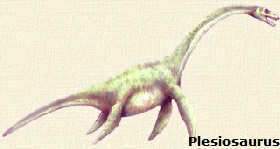 However, these animals never are called dinosaurs in the stories. Since the term “dinosaur” (from the Greek words deinos, meaning “fearfully great,” and sauros, meaning “lizard” or “reptile”) was not coined until the early 1840s (when fossilized dinosaur bones were first discovered and reconstructed in modern times), stories told previously of “fearfully great reptiles” could not have included the word “dinosaur.” Instead, the name attached to these creatures was “dragon.” Have some dragon legends been embellished over time? Of course. Just as people today tend to embellish the size of fish they catch or the size of a dog that nips their leg, people in the past said things about dragons that undoubtedly were exaggerations. Such inaccuracies, however, do not negate the overriding truth that “fearfully great reptiles” of many different shapes and sizes once lived with humans - anymore than the differences in worldwide flood legends mean we must discount the idea of a universal flood. However, these animals never are called dinosaurs in the stories. Since the term “dinosaur” (from the Greek words deinos, meaning “fearfully great,” and sauros, meaning “lizard” or “reptile”) was not coined until the early 1840s (when fossilized dinosaur bones were first discovered and reconstructed in modern times), stories told previously of “fearfully great reptiles” could not have included the word “dinosaur.” Instead, the name attached to these creatures was “dragon.” Have some dragon legends been embellished over time? Of course. Just as people today tend to embellish the size of fish they catch or the size of a dog that nips their leg, people in the past said things about dragons that undoubtedly were exaggerations. Such inaccuracies, however, do not negate the overriding truth that “fearfully great reptiles” of many different shapes and sizes once lived with humans - anymore than the differences in worldwide flood legends mean we must discount the idea of a universal flood.
The Ubiquity and Antiquity of Dragon Legends
Were legends of large dinosaur - like reptiles only to appear late in the histories of a handful of cultures around the world, one might well argue for 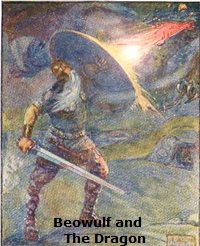 their dismissal in legitimate historical discussions. After all, what is a smattering of strange animal descriptions and fairy - tale - like stories interspersed in only a few places on Earth? Such similar stories of unique reptilian creatures in only a handful of places on the globe might reasonably be passed off as just coincidence. The “coincidence card,” however, looks rather weak in light of the vast amount of testimony regarding the longstanding, widespread nature of dragon legends. their dismissal in legitimate historical discussions. After all, what is a smattering of strange animal descriptions and fairy - tale - like stories interspersed in only a few places on Earth? Such similar stories of unique reptilian creatures in only a handful of places on the globe might reasonably be passed off as just coincidence. The “coincidence card,” however, looks rather weak in light of the vast amount of testimony regarding the longstanding, widespread nature of dragon legends.
Many authors are adamant that dragons were purely mythical creatures. Yet, interestingly, these same writers testify to the ubiquity of dragon legends. Take, for example, Carl Lindall, contributing writer for World Book Encyclopedia. He believes “[d]ragons did not really exist,” even though “[e]very country had them in its mythology. In Greece dragons were slain by Hercules, Apollo, and Perseus. Sigurd, Siegfried, and Beowulf killed them in Norse, German, and English legend” (1996, 5:265 - 266, emp. added).
In his brief book on Chinese Dragons, Roy Bates, like Lindall, suggested that the dragon “was never a real beast” (2002, p. 15). Yet, Bates similarly confessed: “No other creature in the world has had such a far - reaching influence on the minds of so many people” (p. vii, emp. added).
 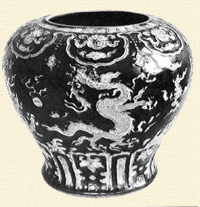 
Flag of the Qing Dynasty that ruled China, Manchuria, Tibet, Taiwan and Mongolia from 1644 to 1912; This flag dates from the period from 1890 to the establishment of the republic in 1912. Early 16th century Wine Jar from The Ming Dynasty, (The Ming Dynasty was the ruling dynasty of China from 1368 - 1644 A.D) Blue and white Dragon Jar of the late Ming period (1368 - 1644 A.D) 
A 1981 Science Digest article, titled “The Spread of Dragon Myths,” informed readers, “as myth they [dragons - EL] are among the most...persistent and widespread in the world. From millennium to millennium and over all the earth’s continents, dragon and serpent lore shows remarkable similarity” (1981, 89:103). Still, Science Digest was adamant that “[d]ragons, of course, are myth” (89:103).
Several others also have testified to the widespread nature of dragon legends. The famed twentieth - century evolutionist, Carl Sagan, noted: “The implacable mutual hostility between man and dragon, as exemplified in the myth of St. George is strongest in the West.... But it is not a Western anomaly. It is a worldwide phenomenon” (1977, p. 150, emp. added).
Militant evolutionist and LiveScience.com staff writer Ker Than admitted: “Dragons are...found in the myths and legends of cultures all around the world” (2007). James Perloff wrote:
The Flood is not the only common remembrance of the world’s cultures. They also remember “dragons.” From England to China, these were a long part of national “mythologies.” The Indians of North and South America had legends about them. They were written of in Ireland, France, Germany, Italy, Greece, Switzerland, Scandinavia, Ethiopia, Egypt, Persia, Russia, India, and Japan (1999, p. 181). On the inside front dust jacket of his book, Dragons: A Natural History, Dr. Karl Shuker noted that dragons “have been found in an astounding number of places. Dragons and their near relatives have found niches in every ecosystem on the planet - from the mountains of Greece to the forests of northern Europe to the volcanic plain of Mesoamerica to the river valleys of China - and have, as a consequence, become deeply embedded in human culture” (1995). Shuker even included a world map showing the existence of dragon legends in cultures on every continent except Antarctica (pp. 6 - 7). Daniel Cohen called the dragon “the most common monster in the world.... People all over the world have believed in dragons” (1975, p. 97). “A thousand years ago dragons were such familiar creatures that what they looked like and how they behaved was common knowledge to every man, woman, and child,” wrote Dr. Peter Hogarth and Val Cleary in their book Dragons (1979, p. 12). They continued: “No matter where they lived, everyone could describe dragons and dragon behavior...” (p. 12). In her book, British Dragons, Jacqueline Simpson mentioned how in Great Britain alone some 80 dragon legends have been uncovered (1980, p. 10). “Over 70 villages and small towns [in Great Britain - EL] still have a tradition about a local dragon, or can be shown on good evidence to have had such a tradition in the past” (p. 9).
In 2005, Animal Planet aired a program (later released on DVD) titled Dragons: A Fantasy Made Real. The film incorporated legend, alleged scientific facts, various theories (including, and especially, evolution), state - of - the - art CGI animation, and the voice talent of Patrick Stewart. It was a highly publicized film that once again put a spotlight on dragons. Although it was far from a legitimate documentary, several statements from the film reinforce the ubiquitous nature of dragon stories. Within the first minute of the 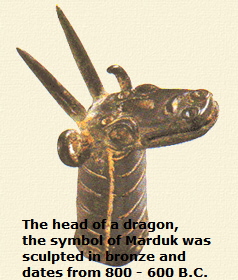 program, the viewer learns: program, the viewer learns: There is one creature remembered in the legends of almost every human culture that’s ever existed. A creature depicted with remarkable similarity by the Chinese, the Aztecs, even the Inuit who live in a frozen land where no reptiles are found - even they have stories of this animal: the dragon. Cultures from different continents, people who had no contact with one another yet all of them have stories describing the same mythical animal (Dragons: A Fantasy..., 2005a). The dragon is “a creature that burns bright in the memory of all humankind” (2005a). “People that could have never spoken to one another shared visions of the same creature” - the dragon (Dragons: A Fantasy..., 2005b). On the back cover of the Dragons DVD, Animal Planet highlighted how “[t]hroughout human history, people have been fascinated with dragons, which have appeared in the myths and legends of almost every world culture” (2005a). Although, admittedly, Dragons: A Fantasy Made Real was more “docu - fantasy” than documentary, the repeated comments about the world’s immersion in dragon lore are backed by an enormous reserve of testimony. All historians and dragon lovers seem to be in agreement on at least this one point: reports of dragons are universal. Dragon legends also are characterized by their longstanding tradition. According to The New Encyclopedia Britannica, “From ancient times, it [the Chinese dragon - EL] was the emblem of the Imperial family, and until the founding of the republic (1911) the dragon adorned the Chinese flag” (“Dragon,” 1997, 4:209, emp. added; see also Bates, 2002, p. vii). In his book, History Begins at Sumer, Dr. Samuel Kramer observed how “the dragon - slaying theme was an important motif in the Sumerian mythology of the third millennium B.C.” (1959, p. 170, emp. added). “[F]our thousand years ago,” Hogarth and Clery wrote, “sightings of dragons seem to have been almost as frequent as sightings of whales today” (1979, p. 13).
Dragons are anything but new. Unlike new breeds of dogs and other animals which seem to pop up every few years, the dragon seems always to have been in the mind of man. Animal Planet admitted: “ This is the animal about which humankind has throughout our history been most compelled by” (Dragons: A Fantasy..., 2005a, emp. added).
Though we would disagree highly with Science Digest’s extended, evolutionary timetable, notice what the journal suggested about the antiquity of dragon legends: “[T]he earliest dragonlike [sic] myths may have originated as long as 100,000 years ago.... As myth they [dragons - EL] are among the most ancient.... Dragon legends have been with humanity since the dawn of recorded history...” (“The Spread...,” 1981, 89:103).
Dragon legends are not just cute stories that our ancestors began telling only in the last few centuries. They have been told all over the world for millennia. Such antiquity and ubiquity deserves an adequate explanation.
The Variety of Dragons
The English word “dragon” is derived from the Greek word drakonvia the Latin draco, which “was used originally for any large serpent” (“Dragon,” 1997, 4:209) or reptile (Hogarth and Clery, 1979, p. 80), whether real or mythological, aquatic, aerial, or terrestrial. [NOTE: The Greek legend of Medea flying through the air in a chariot pulled by dragons indicates that even in Greek culture something more than just large snakes often was implied by the use of drakon.] In English, “dragon” came to mean a creature that was “basically reptilian,” though with a variety of possible features, such as wings, legs, claws, horns, etc. (cf. Simpson, 1980, p. 14). The forms of dragons “varied from the earliest of times,” but its reptilian traits were always dominant (“Dragon,” 4:209). In his book, Dragons: A Natural History, Dr. Shuker observed: “For although the winged, four - legged, flame - spewing horror of classical mythology may well be the most famous type of dragon in the Western world, it is far from being the only type on record” (1995, p. 9).
Daniel Cohen agreed, saying, “[T]here are many kinds of dragons” (1975, p. 97). Tiamat of ancient Babylon was said to have a scaly body, four legs, and wings (“Dragon,” 4:209). Sirrush was depicted in Babylon with four legs, scales, a horned head, and a snake - like tongue. 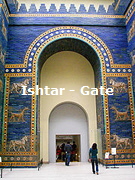 Chinese dragons have “a long, scaly, serpentine neck and body,” as well as four legs, but they are mostly wingless (Rose, 2000, p. 279). According to Hogarth and Clery, Chinese dragons were said to have resembled each other in nine ways, more or less: “The horns resemble those of a stag, his head that of a camel, his eyes those of a demon, his neck that of a snake, his belly that of a clam, his scales those of a carp, his claws those of an eagle, his soles like those of a tiger, his ears those of a cow” (1979, p. 53).
Western dragons, like the oriental dragons, had large, scale - covered, elongated bodies with two or four legs, and tails. Unlike most of the Eastern dragons, however, many of the Western dragons had “vast wings 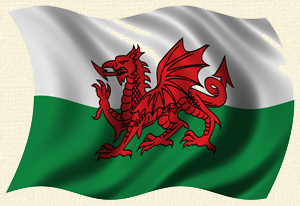 like those of a bat” (Rose, p. 104), and some with crested heads. like those of a bat” (Rose, p. 104), and some with crested heads. Wales, whose national flag predominately displays a red dragon (an animal associated with the country for centuries), reportedly once had many reptiles occupying its airspace. According to Marie Trevelyan: The woods round Penllyne Castle, Glamorgan, had the reputation of being frequented by winged serpents, and these were the terror of old and young alike.... Some of them had crests sparkling with all the colours of the rainbow. When disturbed they glided swiftly...to their hiding places. When angry, they flew over people’s heads, with outspread wings bright...like the features in a peacock’s tail (as quoted in Simpson, 1980, p. 34).
After being wounded, one of these “winged serpents” was said to have begun beating its assailant about the head with its wings” (p. 34). In the English epic Beowulf, more than 1,000 years old, the hero is said to have encountered a “fearsome earth - dragon.” It was described as a “crooked, coiled worm” that “flies through the night, enveloped in flame,” causing men to “fear him greatly.” As the story goes, Beowulf killed the beast, but not before its venomous bite ultimately led to his own doom (see Simpson, pp. 28 - 29). Two well - known ancient historians documented that flying reptiles and humans were contemporaries more than 2,000 years ago. Herodotus, respected Greek historian who lived in approximately 450 B.C., once wrote: There is a place in Arabia...to which I went, on hearing of some winged serpents; and when I arrived there, I saw bones and spines of serpents, in such quantities as it would be impossible to describe. The form of the serpent is like that of a water - snake; but he has wings without feathers, and as like as possible to the wings of a bat (n.d., emp. added).
IPS Note: Herodotus, known as "The Father of History" was an ancient Greek historian who lived in the 5th century BC and wrote a history of the Persian invasion of Greece in the early fifth century B.C., known simply as The Histories of Herodotus (485 BC - c. 420 BC). This work was later divided into nine books, named after the Muses. Respect for the accuracy of his work has gained respect in the last century and he is now recognized not only as a pioneer in history but in ethnography and anthropology as well.
Herodotus recognized that such creatures were not birds, mammals, or insects - but reptiles with wings.  In the first - century A.D. the Jewish historian Josephus wrote about Moses and the Israelites having a difficult time passing through a particular region because of the presence of flying reptiles. When the ground was difficult to be passed over, because of the multitude of serpents (which it produces in vast numbers...some of which ascend out of the ground unseen, and also fly in the air, and do come upon men at unawares, and do them a mischief).... [Moses] made baskets like unto arks, of sedge, and filled them with ibes [i.e., birds], and carried them along with them; which animal is the greatest enemy to serpents imaginable, for they fly from them when they come near them; and as they fly they are caught and devoured by them (1987, 2:10:2, emp. added).
Although these two historians did not mention the extremely large flying reptiles, they did record snake - like winged creatures that could fly. In the 1200s, Italian explorer Marco Polo wrote of seeing long, two - legged reptiles (called “lindworms”) while passing through Central Asia (n.d., 2:49). Time - Life reported how one ancient Chinese emperor of the Sung Dynasty (c. A.D. 1000 - 1300) is said to have raised a dragon in his palace (Dragons..., 1984, p. 57). According to a chronicle in Canterbury Cathedral, around A.D. 1449, Englishmen reported seeing “two fire - breathing dragons engaged in a fierce, hour - long struggle.” One was black, while the other was “reddish and spotted” (Folklore..., 1973, p. 241). In her book British Dragons, Jacqueline Simpson brings to light several dragon legends, including one that in 1866 was reported to have originally occurred in 1405. Close to the town of Bures, near Sudbury, there has lately appeared, to the great hurt o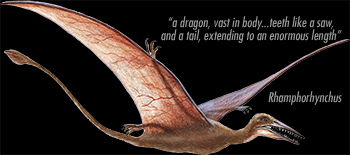 f the countryside, a dragon, vast in body, with a crested head, teeth like a saw, and a tail, extending to an enormous length. Having slaughtered the shepherd of a flock, it devoured many sheep. There came forth in order to shoot at him with arrows the workmen of the lord on whose estate he had concealed himself, being Sir Richard de Waldegrave, Knight; but the dragon’s body, although struck by the archers, remained unhurt, for the arrows bounced off his back as if it were iron or hard rock. Those arrows that fell upon the spine of his back gave out as they struck it a ringing of tinkling sound, just as if they had hit a brazen plate, and then flew away off by reason of the hide of this great beast being impenetrable. Thereupon, in order to destroy him, all the country people around were summoned. But when the dragon saw that he was again about to be assailed with arrows, he fled into a marsh or mere and there hid himself among the long reeds, and was no more seen (p. 60, emp. added). f the countryside, a dragon, vast in body, with a crested head, teeth like a saw, and a tail, extending to an enormous length. Having slaughtered the shepherd of a flock, it devoured many sheep. There came forth in order to shoot at him with arrows the workmen of the lord on whose estate he had concealed himself, being Sir Richard de Waldegrave, Knight; but the dragon’s body, although struck by the archers, remained unhurt, for the arrows bounced off his back as if it were iron or hard rock. Those arrows that fell upon the spine of his back gave out as they struck it a ringing of tinkling sound, just as if they had hit a brazen plate, and then flew away off by reason of the hide of this great beast being impenetrable. Thereupon, in order to destroy him, all the country people around were summoned. But when the dragon saw that he was again about to be assailed with arrows, he fled into a marsh or mere and there hid himself among the long reeds, and was no more seen (p. 60, emp. added).
REFERENCES
The American Heritage Dictionary of the English Language (2000), (Boston, MA: Houghton Mifflin), fourth edition. Bates, Roy (2002), Chinese Dragons (Oxford: University Press). Butt, Kyle and Eric Lyons (2005), “A Trip Out West - To See the Dinosaurs,” Resources, 4[3]:9R - 11R, March, [On - line], URL: http://www.apologeticspress.org/articles/2705. Cohen, Daniel (1975), The Greatest Monsters in the World (New York: Dodd, Mead, & Company). Dawson, John William (1895), The Historical Deluge in Relation to Scientific Discovery (Chicago, IL: Revell). “Dragon” (1997), The New Encyclopedia Britannica, Micropaedia (Chicago, IL: Encyclopedia Britannica). Dragons: The Enchanted World (1984), (Alexandria, VA: Time - Life Books). Dragons: A Fantasy Made Real (2005a), Animal Planet (Silver Spring, MD: Discovery Communications). Dragons: A Fantasy Made Real (2005b), “Trailer: Dragon Culture,” Animal Planet, [On - line], URL: http://animal.discovery.com/convergence/dragons/dragons.html. Folklore, Myths and Legends of Britain (1973), (London: Readers’ Digest). Herodotus (no date), The History of Herodotus, trans. George Rawlinson, [Online], URL: http://etext.library.adelaide.edu.au/mirror/classics.mit.edu/ Herodotus/history.2.ii.html. Hogarth, Peter and Val Clery (1979), Dragons (New York: Viking Press). Josephus, Flavius (1987 edition), The Life and Works of Flavius Josephus: Antiquities of the Jews, trans. William Whiston (Peabody, MA: Hendrickson). Kitcher, Philip (1982), The Case Against Creationism (Cambridge, MA: MIT Press). Kramer, Samuel Noah (1959), History Begins at Sumer (Garden City, NY: Doubleday). Lindall, Carl (1996), “Dragon,” World Book Encyclopedia (Chicago, IL: World Book). Lyons, Eric and Kyle Butt (2003), “Legends of the Flood,” Reason & Revelation, 23[11]:102 - 103, November, [On - line], URL: http://www.apologeticspress.org/articles/40. Perloff, James (1999), Tornado in a Junkyard: The Relentless Myth of Darwinism (Arlington, MA: Refuge Books). Polo, Marco (no date), The Travels of Marco Polo, [On - line], URL: https://www.nauticus.org/ebooks/TheTravelsofMarcoPoloVolume2.pdf. Rose, Carol (2000), Giants, Monsters, and Dragons: An Encyclopedia of Folklore, Legend, and Myth (New York: W.W. Norton). Sagan, Carl (1977), The Dragons of Eden (New York: Random House). Schoch, Robert M. (2003), Voyages of the Pyramid Builders (New York: Jeremy P. Parcher/Putnam). Shuker, Karl (1995), Dragons: A Natural History (New York: Simon & Schuster). Simpson, Jacqueline (1980), British Dragons (London: B.T. Batsford). “The Spread of Dragon Myths” (1981), Science Digest, 89:103, May. Than, Ker (2007), “Top 10 Beasts and Dragons: How Reality Made Myth,” LiveScience.com, [On - line], URL: http://www.livescience.com/animals/top10_dragons.html. Whitcomb, John C. and Henry M. Morris (1961), The Genesis Flood (Philadelphia, PA: Presbyterian & Reformed). Historical Support for the Coexistence of Dinosaurs and Humans [Part II]
Although some will continue to dismiss all dragons as purely mythical creatures, the widely purported, eyewitness accounts of these animals indicate otherwise. In his foreword to Dr. Shuker’s book Dragons: A Natural History, Desmond Morris remarked: “As recently as the seventeenth century, scholars wrote of dragons as though they were scientific fact, their anatomy and natural history being recorded in painstaking detail” (Shuker, 1995, p. 8). Hogarth and Clery agreed, saying, “No matter where they lived, everyone could describe dragons and dragon behavior in colorfully lurid detail” (1979, p. 12). They continued: The evidence [for dragons - EL] is not confined to works of natural history and literature but appears in everyday chronicles of events.... And such eyewitness accounts are not derived from hearsay or anonymous rumor; they were set down by people of some standing, by kings and knights, monks and archbishops, scholars and saints (pp. 13 - 14). Even Animal Planet could not help but be impressed by the voluminous amount of documentation for these animals. In their 2005 film on dragons they expressed amazement over “how much was known about dragons.... All the different kinds of dragons. And it’s all documented in medieval manuscripts and Chinese encyclopedias” (Dragons: A Fantasy..., emp. added). One of the producers of the film even asked: “Everyday of the week Animal Planet tells you about all the animals around this planet that we live on. But what about the one animal that we all know about, the one animal that we all grew up with, the one animal that’s in popular culture around the world?” (2005, emp. added).
Why do more people not consider these animals as historical? After all, as consultant Dr. Peter Hogarth pointed out, “People believed in dragons as real animals, just like any other animal. And, actually if you think about it, how could you say in Western Europe in the Middle Ages that an elephant was a real animal and a dragon wasn’t? The information you had about them was both the same in each case” (2005). Even the Bible - the most historically documented, widely read ancient book in all the world - describes dragon - like animals. Like Herodotus and Josephus, it mentions the “flying serpent” (Isaiah 30:6). In Job 40, God described a behemoth with bones “like bars of bronze,...ribs like bars of iron” (vs. 18) whose tail “moves...like a cedar” (vs. 17). This behemoth was “chief of the ways of God” (vs. 19, ASV). Though there likely was much speculation about this animal, since he apparently lived a more secluded life “under the lotus trees, in a covert of reeds and marsh” (vs. 21), it was no fairytale creature, for God told Job that, the behemoth, “I made along with you” (vs. 15). Still, perhaps more notable than the massive behemoth is the creature that God described next. In speaking to Job about His sovereignty over the natural world, Jehovah described a real animal called leviathan. God began by asking several rhetorical questions: Can you draw out leviathan with a hook, or snare his tongue with a line which you lower? Can you 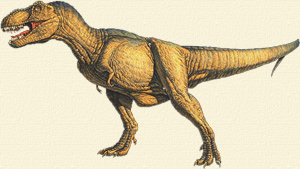 put a reed through his nose, or pierce his jaw with a hook? Will he make many supplications to you? Will he speak softly to you? Will he make a covenant with you? Will you take him as a servant forever? Will you play with him as with a bird, or will you leash him for your maidens? Will your companions make a banquet of him? Will they apportion him among the merchants? Can you fill his skin with harpoons, or his head with fishing spears? Lay your hand on him; remember the battle - never do it again! Indeed, any hope of overcoming him is false; shall one not be overwhelmed at the sight of him? No one is so fierce that he would dare stir him up.... I will not conceal his limbs, his mighty power, or his graceful proportions. Who can remove his outer coat? Who can approach him with a double bridle? Who can open the doors of his face, with his terrible teeth all around (41:1 - 14)? put a reed through his nose, or pierce his jaw with a hook? Will he make many supplications to you? Will he speak softly to you? Will he make a covenant with you? Will you take him as a servant forever? Will you play with him as with a bird, or will you leash him for your maidens? Will your companions make a banquet of him? Will they apportion him among the merchants? Can you fill his skin with harpoons, or his head with fishing spears? Lay your hand on him; remember the battle - never do it again! Indeed, any hope of overcoming him is false; shall one not be overwhelmed at the sight of him? No one is so fierce that he would dare stir him up.... I will not conceal his limbs, his mighty power, or his graceful proportions. Who can remove his outer coat? Who can approach him with a double bridle? Who can open the doors of his face, with his terrible teeth all around (41:1 - 14)?
Job could do none of these things. Through poetic language, God obviously was reminding Job of leviathan’s renowned strength and ferocity. God continued his description of leviathan, saying: His rows of scales are his pride, shut up tightly as with a seal; one is so near another that no air can come between them; they are joined one to another, they stick together and cannot be parted. His sneezings flash forth light, and his eyes are like the eyelids of the morning. Out of his mouth go burning lights; sparks of fire shoot out. Smoke goes out of his nostrils, as from a boiling pot and burning rushes. His breath kindles coals, and a flame goes out of his mouth. Strength dwells in his neck, and sorrow dances before him. The folds of his flesh are joined together; they are firm on him and cannot be moved. His heart is as hard as stone, even as hard as the lower millstone. When he raises himself up, the mighty are afraid; because of his crashings they are beside themselves. Though the sword reaches him, it cannot avail; nor does spear, dart, or javelin. He regards iron as straw, and bronze as rotten wood. The arrow cannot make him flee; slingstones become like stubble to him. Darts are regarded as straw; he laughs at the threat of javelins. His undersides are like sharp potsherds; He spreads pointed marks in the mire. He makes the deep boil like a pot; he makes the sea like a pot of ointment. He leaves a shining wake behind him; one would think the deep had white hair. On earth there is nothing like him, which is made without fear. He beholds every high thing; He is king over all the children of pride (41:15 - 34).
Could a better description of a dragon be found anywhere? Leviathan had mighty power, an extremely strong neck, “terrible teeth all around,” tightly joined rows of scales that were virtually impenetrable, and a jagged underside that left pointed marks on the ground when it came on land. Most impressive was its ability to expel “sparks of fire” from its mouth and “smoke” from its nose. Were this found in a book of mythology, one might chalk it up to fantasy. However, leviathan and behemoth were anything but mythical [See Behemoth and Leviathan - Creatures of Controversy]. These creatures are recorded in the Bible, not a book of fables and mythology, and they were described by God Himself. What’s more, these creatures were described in a context where many other real animals were mentioned, including the horse, the hawk, and the ostrich (Job 38 - 39). Finally, if behemoth and leviathan were, in fact, make - believe, God’s entire speech (regarding His sovereignty over the created world) would be pointless. DINOSAUR DESCRIPTIONS? So what were dragons? The stories about them are worldwide. They are recorded in reputable, historical writings as factual. If one cannot reasonably dismiss all of these creatures with a mere wave of the hand, what could they have been? Are there any animals alive today that resemble dragons? Or, do we know of any good candidates that are now extinct? In an article titled “Top 10 Beasts and Dragons: How Reality Made Myth,” evolutionist Ker Than explored “what may have inspired the look of dragons” (2007). He first proposed that “Chinese alligators may have been one of the inspirations for the Asian dragon” (2007). Other nominees included the three - foot frill - neck lizard, the 20 - inch bearded dragon, the seven - inch flying dragon (which uses wing - like folds of skin to jump from tree to tree), the 18 - inch fish we call a sea dragon, the 10 - foot - long Komodo dragon, and the 30 - foot python. Incredibly, Than’s number one explanation for dragon legends centered around - not animals - but comets. To people living in ancient times, a comet streaking through the skies with an icy tail millions of miles long would have closely resembled such a creature.... If comets were the inspiration for some dragons, it could help explain why dragons are ubiquitous in the myths and legends of so many different cultures in all corners of the world (2007).
A comet? The litany of dragon legends around the world are indebted to comets for their existence? Such an explanation borders on the ridiculous. Suggesting that small lizards were the inspiration for one of man’s most dreaded, worldwide foes seems equally absurd. Pythons and certain alligators certainly can be 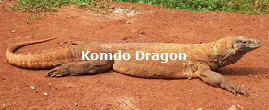 frightening, and undoubtedly were considered formidable foes, but they simply do not fit the characteristics of many of the dragons described throughout history. Though komodo dragons are intimidating creatures, even Than admitted the unlikelihood of them being the inspiration of European dragons since “Europeans didn’t discover them until 1910” (2007). frightening, and undoubtedly were considered formidable foes, but they simply do not fit the characteristics of many of the dragons described throughout history. Though komodo dragons are intimidating creatures, even Than admitted the unlikelihood of them being the inspiration of European dragons since “Europeans didn’t discover them until 1910” (2007). Surprisingly, Than acknowledged: Of all the creatures that ever lived, pterosaurs probably most closely resemble the dragons of European legend. Reptilian and featherless, pterosaurs flew on wings of hide that were supported by a single long and boney finger. The smallest pterosaur was the size of a sparrow, while Quetzalcoatlus - named after the Aztec god - had a wingspan of more than 40 feet, making it the largest flying creature ever (2007, emp. added). Indeed, extinct, dinosaur - like flying reptiles (e.g., Quetzalcoatlus, Rhamphorhynchus, and Pterodactyl) with two legs, large wingspans, claws, slender tails, and toothed beaks more closely resemble many dragons, by a considerable margin, than any animal alive today. One wonders how Than could make such a statement and still list pterosaurs as number three on his top ten list of what gave rise to dragon legends. Could dinosaurs or dinosaur - like marine or flying reptiles really be the inspiration for dragon legends? Although Carl Lindall believes that the animals which inspired dragon legends “did not really exist,” he confessed that “dragons of legend are strangely like actual creatures that have lived in the past.... They are much like the great reptiles which inhabited the earth long before man is supposed to have appeared on Earth” (1996, 5:265, emp. added). The New Encyclopedia Britannica referred to dinosaurs as “gigantic, prehistoric, dragon - like reptiles,” yet the encyclopedia was careful to say that dragon legends “apparently arose without the slightest knowledge” of these real animals “on the part of the ancients” (“Dragon,” 1997, 4:209, emp. added).
Dragons and dinosaurs also gave Daniel Cohen difficulty. He admitted what so many people know all too well: No creature that ever lived looked more like dragons than dinosaurs. Like the dragons, dinosaurs were huge reptiles. Dinosaurs themselves didn’t fly, but at the time of the dinosaurs, there were a number of large flying reptiles.... It sounds as though the dragon legend could have begun with the dinosaurs. Through the ages, stories about dinosaurs would have been confused and exaggerated” (1975, pp. 104,106, emp. added).
In 2003, a nearly complete dinosaur skull was excavated in the Hell Creek Formation in South Dakota. The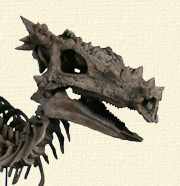 long, knobby, spiky skull appeared so similar to descriptions and paintings of certain “legendary” dragons, it actually was named Dracorex, meaning “dragon king” (see Bakker, et al., 2006). The Children’s Museum of Indianapolis, which now possesses the skull, referred to it as “a new type of dinosaur” that is “66 - million - years - old” and “looks like a dragon” (“Dracorex...,” n.d., emp. added). The Children’s Museum displayed a placard next to a Dracorex image that read: “When we saw this creature’s head, we weren’t sure what kind of dinosaur it was. Its spiky horns, bumps and long muzzle looked more like a dragon” (“Dracorex...,” n.d., emp. added). A dinosaur that looks more like a dragon? Interesting long, knobby, spiky skull appeared so similar to descriptions and paintings of certain “legendary” dragons, it actually was named Dracorex, meaning “dragon king” (see Bakker, et al., 2006). The Children’s Museum of Indianapolis, which now possesses the skull, referred to it as “a new type of dinosaur” that is “66 - million - years - old” and “looks like a dragon” (“Dracorex...,” n.d., emp. added). The Children’s Museum displayed a placard next to a Dracorex image that read: “When we saw this creature’s head, we weren’t sure what kind of dinosaur it was. Its spiky horns, bumps and long muzzle looked more like a dragon” (“Dracorex...,” n.d., emp. added). A dinosaur that looks more like a dragon? Interesting Dr. Shuker also recognized that “[s]ome dragons were clearly inspired by real - life  | Dracorex - the dinosaur that looks like a dragon was dug up in 2004 and named after the Harry Potter books |  |
|
|
animals long familiar to the zoological world” (1995, p. 10). He later connected dragons with dinosaurs, saying, “There is no doubt that dragons and certain dinosaurs (especially some of the larger predatory types) do exhibit a surprising outward similarity (p. 93).
The truth is, the only reason to reject what appears so obvious and be “surprised” about the similarities between dragons and dinosaurs, is if a person buys into the evolutionary timeline. Cohen confessed: “The problem is time. As far as we know, all the dinosaurs died out over 70 million years ago. That long ago, there were no people on the earth. So who could remember the dinosaurs?” (1975, p. 106). Renowned atheist Carl Sagan speculated that humans may very well “remember” dinosaurs. He recognized the ubiquity of dragon legends and indicated that the “pervasiveness” of these stories “is probably no accident” (1977, p. 149). Interestingly, Sagan hypothesized that “dragons posed a problem for our protohuman ancestors of a few million years ago, and that the terror they evoked and the deaths they caused helped bring about the evolution of human intelligence” (p. 150). Sagan then specifically addressed dinosaurs and dragons. He wrote: The most recent dinosaur fossil is dated at about sixty million years ago. The family of man (but not the genus Homo) is some tens of millions of years old. Could there have been manlike creatures who actually encountered Tyrannosaurus rex? Could there have been dinosaurs that escaped the extinctions in the late Cretaceous Period? Could the pervasive dreams and common fear of “monsters,” which children develop shortly after they are able to talk, be evolutionary vestiges of quite adaptive - baboonlike - responses to dragons and owls? (p. 151).
Notice that even Carl Sagan, one of the foremost evolutionists of the 20th century, could not get around the fact that dragons sound eerily similar to dinosaurs. Such speculations on the origin of dragons would be meaningless unless one believed that dragons and dinosaurs appear to be one and the same. Still, the best explanation that Sagan could conjure up, while still holding onto some semblance of the evolutionary geologic timetable, is that our very early “baboonlike” ancestors encountered dinosaurs (who may have “escaped the extinctions in the late Cretaceous Period”) and passed their memories of them down to modern man. Once again, we find evolutionists’ explanations of dragon legends bizarre, irrational, and even laughable. If it were not for evolutionists’ commitment to their faulty billion - year timetable [See The Geologic Timetable...], it would appear they would have few problems accepting what is so obvious - that dinosaurs previously were called dragons, and humans once lived with them on Earth. FIRE - BREATHING DRAGONS? If dragons were dinosaurs, does that mean that dinosaurs breathed fire? After all, many dragon legends speak of these creatures expelling smoke and/or fire from their mouths. Even the Bible describes leviathan as a fire - breathing animal. Is this not as absurd as suggesting that our alleged animal ancestors passed down their memories of dinosaurs over tens of millions of years or that dragon legends originated from comets in outer space? In his 1998 book, titled The Genesis Question, well - known progressive creationist Hugh Ross insisted that “[n]o dinosaur...ever breathed fire or smoke,” and he ridiculed the idea that leviathan was a dinosaur or dinosaur - like, aquatic creature that breathed fire (p. 48). (Ross chose rather to believe that the magnificent creature described by God in His second speech to Job was a crocodile; see Lyons, 2001 for a response to such a suggestion.) How can Ross or anyone else be so certain that “no dinosaur...ever breathed fire or smoke”? By Ross’s own candid admission, he has never seen a dinosaur (since he believes they became extinct 65+ million years ago; see pp. 48 - 49), and thus he obviously never has observed every dinosaur that walked on land (or dinosaur - like reptile that swam in the oceans). As Dr. Henry Morris remarked in his book, The Biblical Basis for Modern Science, “To say that the leviathan could not have breathed fire is to say much more than we know about leviathans (or water dragons or sea serpents)” (1984, p. 359, parenthetical item in orig.). The truth is, Ross and many others simply cannot fathom a real animal with the ability to produce fire and smoke. Is this reasonable? Ross and others, it seems, have forgotten that all animals, including dinosaurs, were designed and created by God on days five and six of Creation. From the creationist’s perspective, if Jehovah wanted to create one or more dinosaurs that could expel fire, smoke, or some deadly chemical out of their mouths without harming themselves, He certainly could have done so. Bearing in mind the way in which God described leviathan to Job in Job 41:18 - 21, and considering that many secular stories that describe “fiery dragons” have circulated for millennia, it is logical to conclude that He did create such creatures. It seems fitting to ask doubters the same rhetorical question God asked Abraham long ago: “Is anything too hard for the Lord?” (Genesis 18:14). Who is Hugh Ross (or anyone) to say that “no dinosaur...ever breathed fire”? The prophet Jeremiah proclaimed: “Ah, Lord God! Behold, You have made the heavens and the earth by Your great power and outstretched arm. There is nothing too hard for You” (32:17, emp. added). What’s more, even modern science gives us a glimpse into the likelihood of an animal being able to do something as impressive as breathe fire. When a person considers that electric eels can produce enough electricity to stun a horse without ever shocking itself, that fireflies can make bioluminescent light, and that the Komodo dragon can store deadly bacteria inside its mouth (which only harms its prey, and never itself), it should be easy to accept the possibility that a dinosaur or a dinosaur - like reptile was capable of expelling certain hot, gaseous fumes that could ignite. Perhaps the closest living comparison to an extinct, fire - breathing animal is the little insect we call the bombardier beetle. One European encyclopedia described t his creature as a “[b]eetle that emits an evil - smelling fluid from its abdomen, as a defense mechanism. This fluid rapidly evaporates into a gas, which appears like a minute jet of smoke, when in contact with air, and blinds the predator about to attack” (“Bombardier Beetle,” 2007). In 1985, TIME magazine featured this amazing creature, calling its defense system “extraordinarily intricate, a cross between tear gas and a tommy gun” (Angier, p. 70). How can one look at a living bombardier beetle that produces a boiling hot, acidic, noxious spray in its abdomen, which the insect then expels from its backend in a rapid - fire action, and conclude that no animal ever breathed fire or smoke? his creature as a “[b]eetle that emits an evil - smelling fluid from its abdomen, as a defense mechanism. This fluid rapidly evaporates into a gas, which appears like a minute jet of smoke, when in contact with air, and blinds the predator about to attack” (“Bombardier Beetle,” 2007). In 1985, TIME magazine featured this amazing creature, calling its defense system “extraordinarily intricate, a cross between tear gas and a tommy gun” (Angier, p. 70). How can one look at a living bombardier beetle that produces a boiling hot, acidic, noxious spray in its abdomen, which the insect then expels from its backend in a rapid - fire action, and conclude that no animal ever breathed fire or smoke?
IPS Note: Komodo Dragons can grow up to 3m long and weigh as much as 70kg. The Komodo dragon is a species of lizard that inhabits the islands in Indonesia. A member of the monitor lizard family, it is the largest living species of lizard, growing to an average length of 6.6 to 9.8 ft, and weighing around 150 lb.
In reality, whether a person is a creationist or an evolutionist, he should have no problems believing in the possibility of an animal breathing fire. Surely creationists believe that an omniscient, omnipotent God could create a creature that expels fire from its body. And, if evolutionists believe (1) that the entire Universe came from the explosion of a period - size, dense ball of matter 15 billion years ago, (2) that life came from non - life, and (3) that the bombardier beetle evolved the capability to shoot a 212 - degree, noxious spray from its backend, then one would think that for evolutionists to believe an animal evolved the ability to expel blasts of fire from its mouth would by no means be implausible.
CONCLUSION Evolutionist Mark Norell admitted that “all the mythical creatures...have real underpinnings in biology” (as quoted in Hajela, 2007). What real animals prompted dragon legends? What rational explanation exists for the multitude of dragon legends around the world? Why did people in different places and times, separated by thousands of miles, all come up with stories of giant reptiles that sound more like extinct dinosaurs than any other animal on Earth? Why are descriptions of dinosaur - like aquatic, aerial, and terrestrial animals given in reputable, historical writings, including the Bible? Why does history record the existence of large reptilian creatures with serpentine necks, elongated bodies, enormous tails, hard skin, stout legs, spiked backs, knobby heads, terrible teeth, snake - like tongues, horned or crested heads, sharp claws, and membranous wings? Why are the physical characteristics of many dragons so similar to the anatomy of various dinosaurs? Is all of this just a coincidence? Unfortunately, those who continue to sympathize with evolutionists’ billion - year timetable simply will not allow themselves to believe there actually is a connection between dinosaurs and dragons, even though it is readily apparent. Daniel Cohen admitted, “No creature that ever lived looked more like dragons than dinosaurs” (1975, p. 104). Yet, he went on to point out that since dinosaur fossils are supposedly millions of years old, “we have to assume that dinosaurs died out long before anyone could remember them....
[W]e must assume that dinosaurs have nothing to do with dragons” (pp. 106 - 107, emp. added). In truth, the problem is not with dragon legends and dinosaurs, but with the assumption - based, faulty dating methods of evolutionists (see DeYoung, 2005). The reasonable view is that humans and dinosaurs once lived together, and the stories of their interaction were passed down from generation to generation. When you think about it, this is exactly what we would expect to find (ubiquitous stories of “dragons”), if humans once lived with dinosaurs. Although there are other powerful evidences of the one - time coexistence of dinosaurs and humans, dragon legends certainly bear witness to the fact that dinosaurs and humans once lived together. Truly, evolutionists cannot logically explain away these “dinosaur descriptions.” For since the creation of the world His invisible attributes are clearly seen, being understood by the things that are made, even His eternal power and Godhead, so that they are without excuse, because, although they knew God, they did not glorify Him as God, nor were thankful, but became futile in their thoughts, and their foolish hearts were darkened. Professing to be wise, they became fools (Romans 1:20 - 22, emp. added).
REFERENCES Angier, Natalie (1985), “Drafting the Bombardier Beetle,” TIME, February 25. Bakker, Robert, et al. (2006), “Dracorex Hogwartsia, N. Gen., N. Sp., A Spiked, Flat - headed Pachycephalosaurid Dinosaur from the Upper Cretaceous Hell Creek Formation of South Dakota,” New Mexico Museum of Natural History and Science, Bulletin 35, [On - line], URL: http://www.childrensmuseum.org/dinosphere/draco_rex/dracorex_hogwartsia.pdf. “Bombardier Beetle” (2007), Research Machines Encyclopaedia, [On - line], URL:
http://www.tiscali.co.uk/reference/encyclopaedia/hutchinson/m0063590.html. Cohen, Daniel (1975), The Greatest Monsters in the World (New York: Dodd, Mead, & Company). DeYoung, Don (2005), Thousands...Not Billions (Green Forest, AR: Master Books). “Dracorex Hogwartsia” (no date), The Children’s Museum of Indianapolis, [On - line], URL:
http://www.childrensmuseum.org/dinosphere/draco_rex/index.html. “Dragon” (1997), The New Encyclopedia Britannica, Micropaedia (Chicago, IL: Encyclopedia Britannica). Dragons: A Fantasy Made Real (2005), Animal Planet (Silver Spring, MD: Discovery Communications). “The Geologic Timetable and the Age of the Earth” (2003), Apologetics Press, [On - line], URL:
http://www.apologeticspress.org/pdfs/courses_pdf/hsc0304.pdf. Hajela, Deepti (2007), “Natural History Museum Show on Dragons,” Associated Press, May 25, [On - line],
URL: http://ca.news.yahoo.com/s/capress/070526/entertainment/art_mythic _creatures. Hogarth, Peter and Val Clery (1979), Dragons (New York: Viking Press). Lindall, Carl (1996), “Dragon,” World Book Encyclopedia (Chicago, IL: World Book). Lyons, Eric (2001), “Behemoth and Leviathan - Creatures of Controversy,” Reason & Revelation, 21[1]:1 - 7, January, [On - line],
URL: http://www.apologeticspress.org/articles/154. Morris, Henry M. (1984), The Biblical Basis for Modern Science (Grand Rapids, MI: Baker). Ross, Hugh (1998), The Genesis Question (Colorado Springs, CO: Navpress). Sagan, Carl (1977), The Dragons of Eden (New York: Random House). Shuker, Karl (1995), Dragons: A Natural History (New York: Simon & Schuster). Than, Ker (2007), “Top 10 Beasts and Dragons: How Reality Made Myth,” LiveScience.com, [On - line],
URL: http://www.livescience.com/animals/top10_dragons.html. This item is available on the Apologetics Press Web site at:
http://www.apologeticspress.org/articles/3449 it was originally published in Reason & Revelation, 27[9]:65 - 71 | |